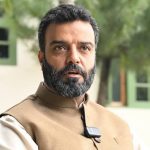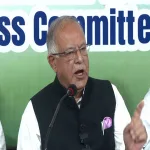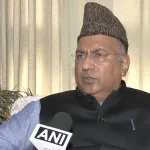AN INITIATIVE OF KVK-GUREZ
PARVEEN KUMAR | BILAL A BHAT
Agriculture cannot survive without its institutions and their innovations. Innovations are further of no use unless and until the ultimate end users for whom the innovations have been made are not informed of. A robust information dissemination system is also vital for wider adoption of the innovations. Such an information dissemination system should be demand driven, empathetic to the needs of farming community, should ensure farmers’ participation and must have an inbuilt system of incorporating feedback of farming communities. A proper feedback helps to identify the weaknesses and strengths of the system thereby helping in taking the corrective action needed. From the imported Training and Visit system (T&V) of 1980s to Agricultural Technology Management Agency (ATMA) and the present day National Mission on Agricultural Extension Technology (NMAET), the country has witnessed many models and approaches.
Krishi Vigyan Kendras (KVKs) set up as district level institutions by ICAR have been entrusted with the task of ensuring that relevant information reaches out to the farming communities and that technologies developed at various research institutes are adopted by the farming community. KVKs have also been taking various policies and programmes of the government to farming community. More than 730 KVKs spread throughout the length and breadth of the country are employing various farmer friendly extension approaches and methodologies with the ultimate aim of reaching out to them and knowing the real time field constraints the farming community in their region is facing.
KVK at Dawar in Gurez is the second KVK in district Bandipora that was sanctioned in the year 2022 by Indian Council of Agricultural Research (ICAR). The valley of Gurez is situated near to the Actual Line of Control and remains cut off from the Kashmir region due to heavy snowfall. Cropping season is therefore confined to six months in a year. The crops grown in rabi season all over the country are grown as kharif season crops in this region. Maize, Wheat, Rajmash, Peas and Potato along with vegetables like cabbage, cauliflowers, tomato, knolhol, peas and leafy ones are grown in the short growing season available in this region. Farmers here are sheep rearers mostly with a few goats in their herd. The size of land holdings here is small and land holdings lay as small fragments at many places. Mechanization here is a difficult task given the topography and terrain of land in this mountainous tract. Peoples can be seen manually ploughing their small fields with spades. Agricultural Extension in this region suffers from lack of human resources and as such technology adoption is low in this region. Farmers are still using outdated varieties which give very low yields. Although KVK-Gurez has now started providing quality seeds under its FLDs programme on maize, wheat, peas and quality seedlings of different vegetables, yet it will take much time to bring all the area under high yielding and hybrid varieties. Although, this has resulted in a positive impact on the yields, but still a lot is to be done. Besides climatic vagaries, the farming community here is confronted with so many constraints. These constraints include lack of quality seeds/seedlings, lack of credit facilities, lack of marketing support, no linkages, low yield of crops and livestock and much more.
During the day time, farming community of this region which mostly comprises of sheep and goat rearers are up in the mountains with their herds to graze them and women folk are busy with their children and household chores. A slot in the evening thus was perceived to be the best time to reach out to them when majority of them have descended down to their homes from the mountains. As the building of KVK-Gurez is under construction, lack of an appropriate place in the Kendra in which to call and interact with the farming community also necessitated that the farming community has to be reached with a different extension approach.
In this regard, KVK-Bandipora-II at Dawar, Gurez has come up with a unique time friendly and empathetic initiative, ‘Ek Sham Kisan ke Naam, An Evening with Farmers’. An idea mooted and conceptualized by Dr. Parveen Kumar, Subject Matter Specialist (Ag. Extension) at KVK-Gurez found favour with the Head KVK-Gurez Dr. Bilal Ahmed Bhat and his team comprising of Dr. Bilal Pandit SMS (Horticulture), Dr. Shahnawaz Dar SMS (Plant Protection) and Dr. Nazir Ahmed SMS (Animal Science). Dr. Kumar further explains that the initiative is a blend of Farming System Research and Extension (FSR&E), participatory approaches like Participatory Rural Appraisal (PRA), Action Research, Case study and Experiential Learning (EL) extension approaches. ‘Ek Sham Kisan Ke Naam’ gives the team KVK-Gurez an opportunity to treat every village as a case study. It also helps in real time diagnosis and treatment of various plant and animal diseases. The frequency of the visit varies from weekly to fortnightly.
Formal settings sometimes are a limitation for the illiterate villagers to convey themselves and put forth their ideas in front of the dignitaries and delegates present there. Ek Sham Kisan ke Naam takes place in an informal setting usually at the common entrance to a village, at a village choupal or a community ground with no chairs, no stage, or any other codal formalities where only consideration is for the SMSs of the Kendra to be in the shoes of farmers. It is a live interaction where scientists are also farmers’ and intend to know and learn from them. In this informal setting, they feel free to express their thoughts and ask whatever comes in their mind. A query by one farmer motivates the others also and then it becomes a live interaction. The would-be farmers’ of the village; that is young children very keenly observe and listen to this live interaction. This also enriches their knowledge of farming. The transect walk of the multidisciplinary experts from Kendra with the farming community of the region in the evening through their village and fields helps them to know more about different resources available in the village, the crops grown in the region, the farming system prevalent and the various constraints they face in farming and allied sectors.
(The authors are scientist and Head at KVK-Gurez; can be reached at [email protected])





